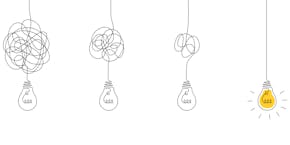Humidify the air
If the relative humidity drops below 40% for several days, the air needs to be humidified to ensure a healthy comfortable climate. Find out more about how to optimally humidify the air and how a humidifier can help.

Humiditiy
Ideal air humidity indoors
The causesCauses of dry indoor air

.jpg?ts=1751634203&w=930&crop=entropy&auto=compress&fit=crop)
The problem
Effects of too dry air
The solution: humidifiers
Functionality and systems
Vaporiser
The water is brought to boiling point in the device using a method similar to the one applied in a kettle, for example. Boiling the water produces hot, germ-free water vapour which is emitted by the device directly into the room. Vaporiser systems, also known as steam humidifiers, are particularly suitable for allergy sufferers. It is important for limescale to be removed regularly from vaporisers. We advise against using hard water or water from water softeners in vaporisers.
Ultrasonic nebuliser
This type of humidification system turns water into mist. An oscillating ultrasonic membrane in the nebuliser atomises the water, turning it into tiny droplets. A built-in fan in the device transports them into the air as mist which humidifies the room air. In principle, the mist emitted by the device is cold because the water inside it is also cold. This makes nebuliser systems suitable for nurseries. With this system, the process of humidification is made visible due to the mist, which is why these devices are also known as atomisers. It is particularly important for nebulisers to be cleaned and descaled regularly. Nebulisers are not suitable for use with hard water or water from a water softener.
Evaporator
The way that an evaporator works is based on the natural principle of evaporation. The humidifier filters inside the device suck up water. The indoor air is sucked in by an integrated fan which guides it through the moist humidifier filters. In the process, the air absorbs the humidity required. As it flows through, the air absorbs tiny water droplets and it is then blown out into the indoor air along with the moisture. The evaporator system has two main advantages. Firstly, evaporators are very quiet, making them the ideal choice for quiet rooms such as bedrooms or offices, for example. Secondly, overhumidification is not possible with this system as the air is only enriched with as much humidity as it needs and is able to absorb based on the current temperature. With this system, the filters need to be replaced regularly. Evaporators are particularly suitable for households with children and babies, as there is no hot water in the unit as with a vaporiser, cleaning is less intensive than with an ultrasonic nebuliser and the units are usually very quiet.
Air washer
This system is a combination of humidifier and air purifier. The principle of humidification belongs to the category of evaporator systems. The difference lies in the humidification medium used: air washers use permanently reusable plastic discs while evaporators have filters which need to be replaced regularly. Air washers are fitted with a set of discs specially designed to absorb humidity and remove particles from the air. The discs which are known as humidification discs or evaporator discs rotate in the water. A fan sucks in the dry indoor air which is guided across the rotating wet discs. Pollutants from the air such as pollen, dust or hair are deposited on the discs in the process. The set of discs continues to rotate and the particles are washed off in the water. The purified moisture still present on the clean part of the disc set is emitted into the air. With this technique, the air is not only humidified but also cleaned to remove pollutants, making air washers ideal for allergy sufferers. Regular cleaning is important in order to rinse out the water tank and remove the impurities washed from the air.
Find the perfect humidifier for you
Articles about humidifying the air
In our blog you will find a lot of useful information about humidifying the indoor air. For example, find out how much electricity a humidifier uses, which is the best humidifier for babies and how a humidifier can help you to have a healthy voice.




















































